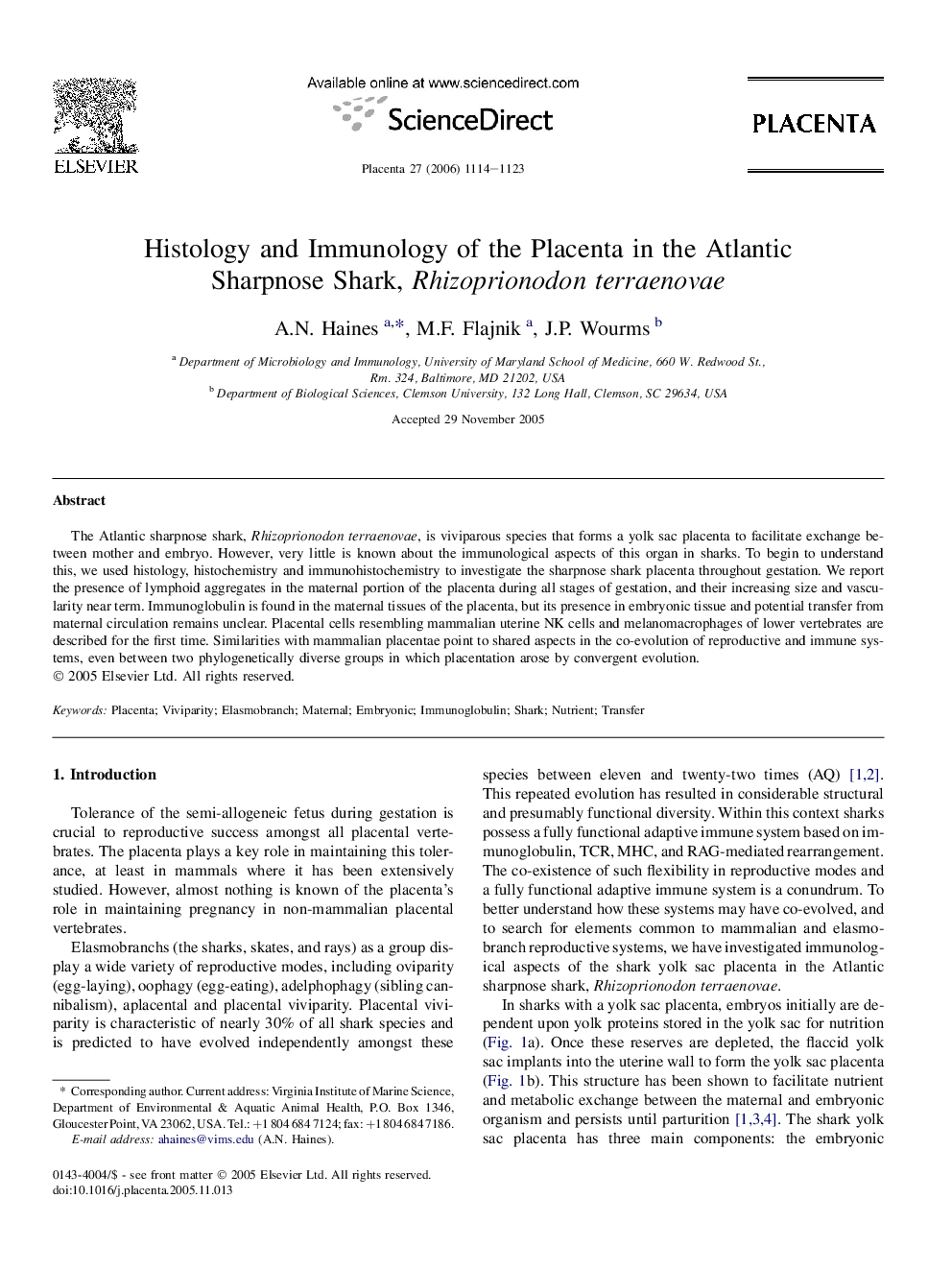| Article ID | Journal | Published Year | Pages | File Type |
|---|---|---|---|---|
| 2789894 | Placenta | 2006 | 10 Pages |
The Atlantic sharpnose shark, Rhizoprionodon terraenovae, is viviparous species that forms a yolk sac placenta to facilitate exchange between mother and embryo. However, very little is known about the immunological aspects of this organ in sharks. To begin to understand this, we used histology, histochemistry and immunohistochemistry to investigate the sharpnose shark placenta throughout gestation. We report the presence of lymphoid aggregates in the maternal portion of the placenta during all stages of gestation, and their increasing size and vascularity near term. Immunoglobulin is found in the maternal tissues of the placenta, but its presence in embryonic tissue and potential transfer from maternal circulation remains unclear. Placental cells resembling mammalian uterine NK cells and melanomacrophages of lower vertebrates are described for the first time. Similarities with mammalian placentae point to shared aspects in the co-evolution of reproductive and immune systems, even between two phylogenetically diverse groups in which placentation arose by convergent evolution.
